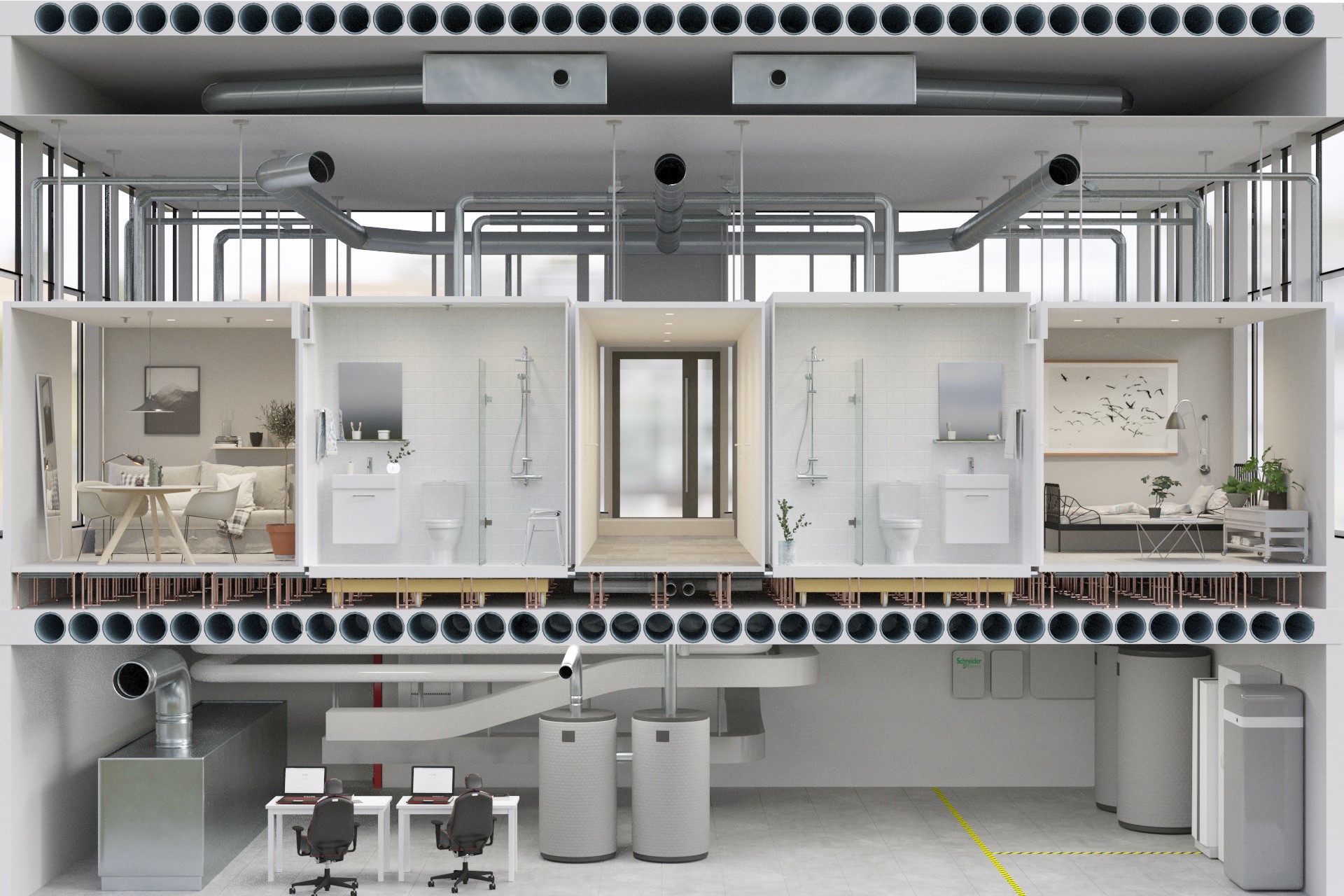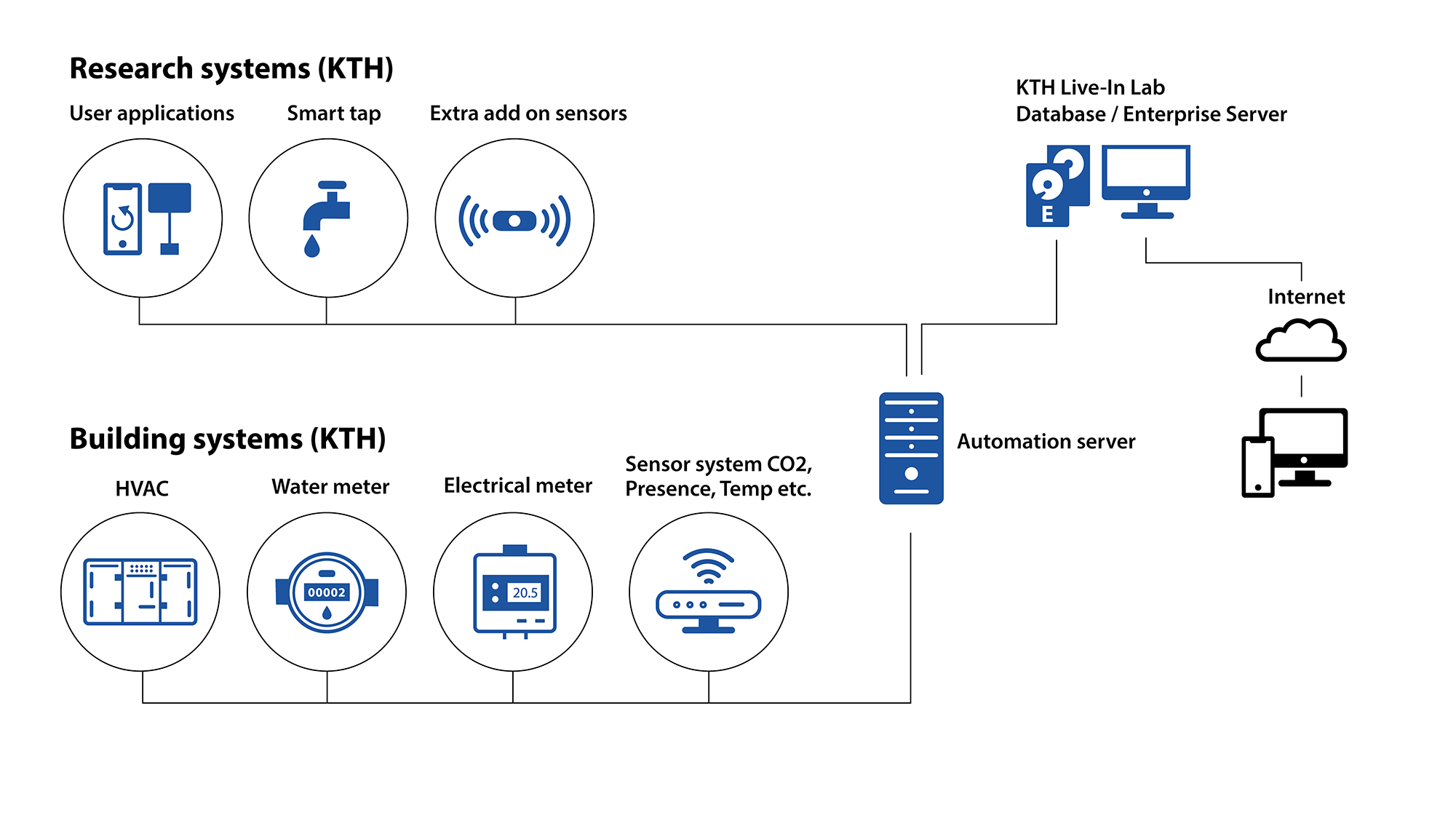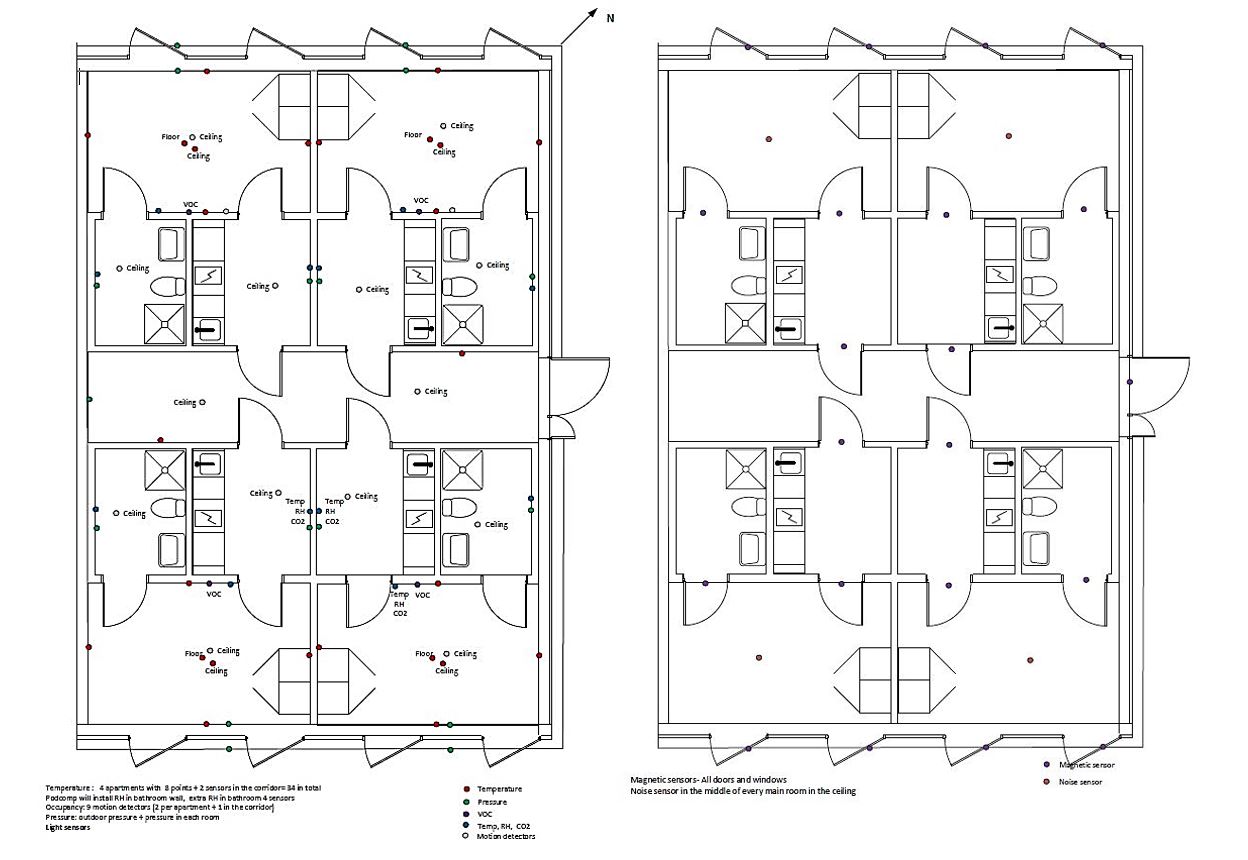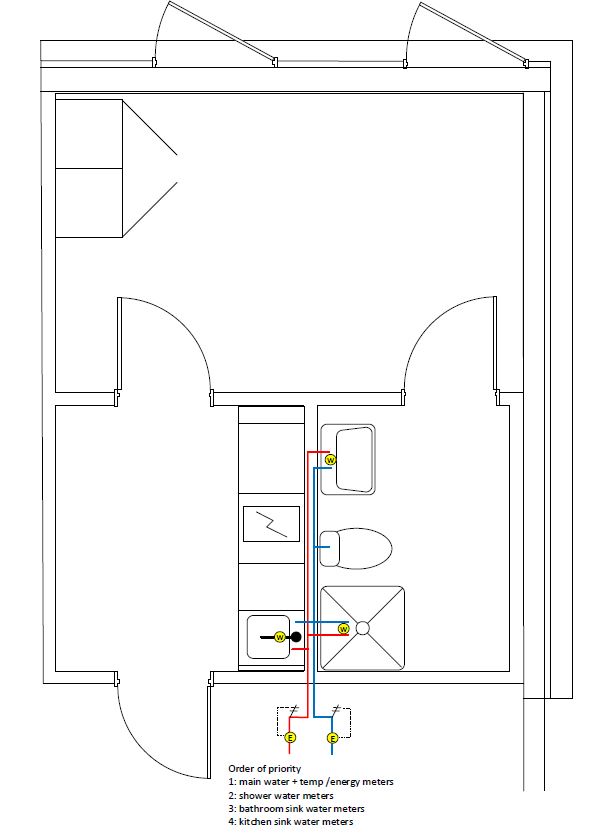Testbed KTH
Testbed KTH is located in a building permit free residence area in one of Einar Mattsson's three plus-energy buildings at KTH Campus Valhallavägen. It consists of a flexible number of apartments distributed over 120 square meters and a larger basement floor.

About Testbed KTH
The premises are a total of 305 sqm distributed on approximately 120 sqm living space, 150 sqm service space and a project office of about 20kvm. Within Testbed KTH, different apartment configurations will be rebuilt on an annual basis, and KTH will rent these out to students who apply to stay in the test apartments. The testbeds are extremely flexible in terms of geometry and installations. The testbeds also have their own solar cells, their own boreholes with the possibility of replacing the collector and soon also their own wind turbines.
Within the 150 sqm, different formations of apartments will be built up depending on the projects currently in progress. The innovative environment is designed to accommodate future technology, but it initially provide insight into today's cutting edge technologies such as vacuum panels, low-voltage grids in apartments, phase changing materials and energy storage, "tri-generation" (production of heat, cooling and electricity), vacuum wc, smart lighting just to mention a few. In addition to clean product tests, the testbed enables adaptive control and control systems, extended sensor installations and future IoT platforms to develop new services and processes related to user and property data.
The buildings have load-bearing exterior walls. The interior walls and all apartments are constructed of light materials. With the chosen technology, the potential for change is large, which in addition to research on future housing, also creates the prerequisites for researching issues related to the existing built environment, such as the environmental programs or single-family houses. Systems involving different lifetime techniques can be tested and optimized. Important parameters that affect management strategies and planned maintenance can be investigated, adjusted, optimized and packaged in business models and strategies.
Systems overview testbed KTH

Sensors in each of the Testbed KTH apartments
Temperature
- Living room
- Air temperature
- Temperature ceiling
- Temperature floor
- Temperature indoor wall 1
- Temperature indoor wall 2
- Temperature outdoor wall 1
- Temperature outdoor wall 2
- Kitchen:
- Air temperature
- Bathroom
- Air temperature
Air quality
- Living room
- Relative humidity
- CO2
- Kitchen:
- Relative humidity
- CO2
- Bathroom
- Relative humidity
- CO2
Light & occupancy
- Living room
- Occupancy
- Ceiling
- Luminous intensity
- Kitchen:
- Occupancy
- Ceiling
- Luminous intensity
- Bench Lighting
- Bathroom
- Occupancy
- Luminous intensity
Light
- Occupancy 1
- Occupancy 2
- Luminous intensity 1
- Luminous intensity 2
Pressure
- GP41
- GP42
- GP43
- GP44
Magnetic Sensor
- Door
- Windows
Noise Sensor
- Living room
Tap Water motion
- Bathroom
- Kitchen
UNITS
Pressure (Pa)
Temperature (°C)
CO2 (ppm)
Relative humidity (%)
Lighting (LUX)
Luminous intensity (%)
sensors location


Systems
Volume Airflow Tin, Tout
Electricity - measurements (Electricity consumption is monitored at individual outlets)
Tap water - Meter cold water and warm water with labtrino ultrasound
DHW - Domestic hot water
DHW - Domestic hot water Waste heat exchanger.
Data
Data storage, security and availability. For more information contact us.
